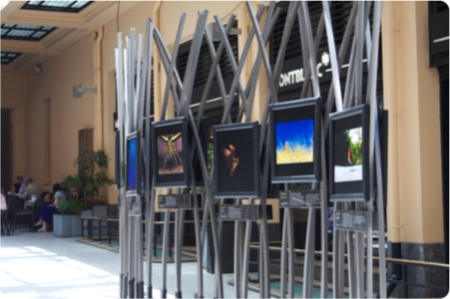
The cover page of the exhibition's booklet
The latest art exhibition of Pablo Picasso entitled “Challenging the past” at the National Gallery in London does not contain any of his most famous works. So, why should someone visit it? Simply because the exhibition presents various paintings throughout Picasso’s career that were inspired, influenced or copied from paintings of other famous artists.
Pablo Picasso (1881 – 1973) is hailed as one the most revolutionary painters of the 20th century, one that defied form and function. Together with Georges Braque, he pioneered a new avant-garde art form called cubism. In cubism, objects are decomposed, analyzed and assembled in an abstract from, sometimes depicted in more that one angles to enhance perspective. However, before resorting to Cubism, Picasso appears to have studied different art movements and researched on the painting styles mastered by other titans of European painting. This exhibition attempts to present Picasso in relation to the works other famous European painters.
The exhibition spans 6 different rooms. In the first room, the “Portraits, the visitor encounters a series of self-portraits, with which Picasso experimented on presenting himself in different guises. Rooms 2 and 4 are dedicated to paintings of Picasso’s muses, including paintings of his wives, mistresses and lovers, heavily influenced by paintings of Goya, Corot, Ingres, Cezanne and Velasquez. In room 3, “Characters and types”, the visitor gets a glimpse of Picasso’s portraits of different Spaniards influenced by El Greco’s and Velasquez paintings and in room 5, we see Picasso’s to one of the most common painting styles of European painting, “Still life”.
But it is at room 6 where the exhibition culminates in the best possible way. In “Variations”, the visitors experience Picasso’s several invocations on paintings of other famous artists like “The Rape of Sabine Women” by Poussin and “La Meninas” from Velasquez. We are being presented with a series of paintings, in which we witness tantalizing succession of decomposing the original painting, analysing it elements and recomposing it in Picasso’s unique style. At the end, Picasso has made the theme of the painting his own. The exhibition also includes a short film (approximately 20 min) giving more explanations of the exhibits and Picasso’s life.
This exhibition helps us reassert Picasso’s position in relation to other European painters. Instead of a revolutionary, an outcast and a person that defied the norm, we witness Picasso’s desire to study all the traditional techniques of European painting and place him alongside other famous painters like El Greco and Degas, Raphael and Goya, Velasquez and Cezanne.
Lambda.
P.S: The exhibition “Picasso – Challenging the Past” at the National Gallery in London lasts until 7 June 2009 and you can find some paintings online. There is also a smaller, free exhibition entitled “Picasso’s Prints: Challenging the Past” at Level 2 of the National Gallery.





